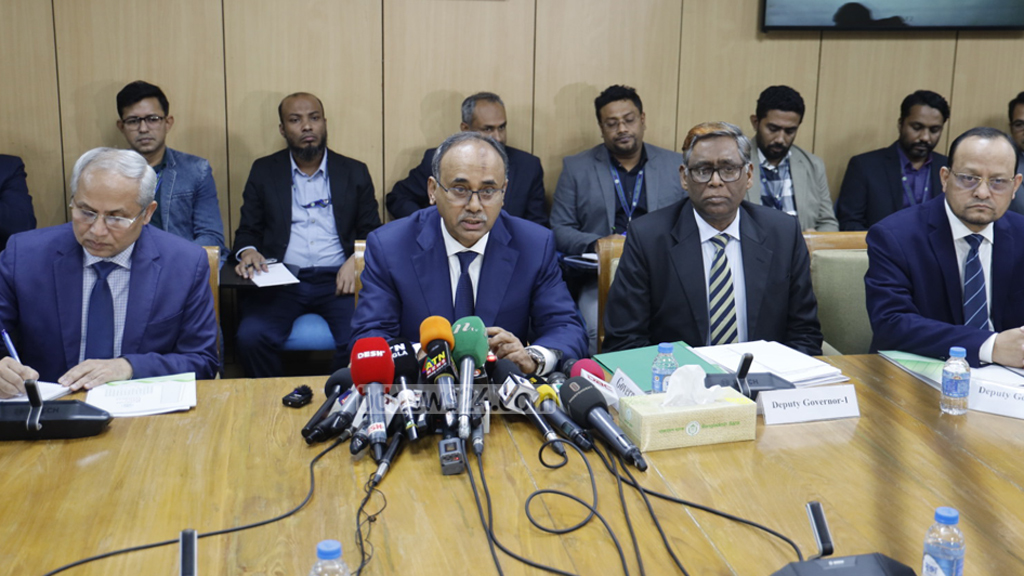Home
+
The central bank unveiled a 'cautious and accommodative' monetary policy for the second half of FY24 with an emphasis on inflation control

Published : 17 Jan 2024, 03:14 PM
The central bank is taking further measures to mitigate inflationary pressures by tightening the supply of money in the market.
As part of a 'cautious and accommodative' monetary policy for the second half of the current fiscal year, Bangladesh Bank has decided to raise the key policy rate, known as repo rate, by 25 basis points to 8 percent to make borrowing more expensive for banks.
The decision was announced at a meeting led by central bank Governor Abdur Rouf Talukder on Wednesday.
Talukdar acknowledged that the inflation control target set in the last monetary policy was not fully achieved, but he noted that inflation did not escalate significantly.

"Since July, our focus shifted from a monetary stance to interest rate targeting. Controlling inflation through interest rate hikes is a gradual process. Although inflation rates have not increased beyond previous levels, there has been a continuous decrease since last November."
"Our monetary policy once again prioritises inflation control."
The policy rate was previously raised by 50 basis points to 7.75 percent in November.
The central bank has also made adjustments to its interest rate corridor as part of its contractionary monetary policy.
The special repo rate (Standing Lending Facility, or SLF), which is the ceiling of the interest rate corridor, has been lowered by 25 basis points to 9.50 percent.
Meanwhile, the reverse repo rate (Standing Deposit Facility, or SDF) has been raised by 75 basis points to 6.5 percent.
As a result, the spread between the upper and lower limits of the benchmark interest rate corridor has been narrowed from 200 basis points to 150 basis points.
This means that the SDF interest will now be determined by adding a maximum of 150 basis points to the policy rate of 8 percent, and similarly, subtracting 150 basis points from the SLF interest rate.
In practical terms, when commercial banks borrow from the central bank to meet their liquidity needs, the interest rate is set through the repo rate. Conversely, through the reverse repo process, banks park their excess funds with the central bank.
The interest rate at which the central bank extends long-term loans to commercial banks is known as the bank rate. The bank rate, which currently stands at 4 percent, has not been altered.
The central bank emphasised that its monetary policy will focus on mitigating demand-side inflationary pressures, managing exchange rate pressures, ensuring the availability of necessary funds for the government's targeted economic growth, and securing credit supply to sectors that generate employment.